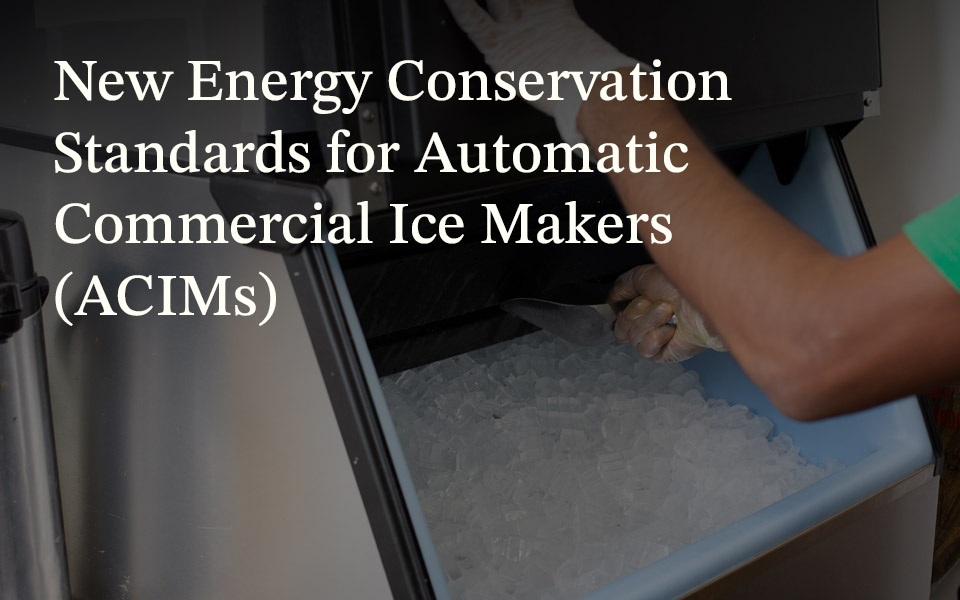On April 7, the U.S. District Court of Appeals for the District of Columbia ruled that the Environmental Protection Agency (EPA) had improperly suspended the limits on the use of hydrofluorocarbon (HFC) refrigerants in its 2018 guidance. ACHR The NEWS interviewed Jennifer Butsch, Emerson’s regulatory affairs manager of air conditioning, and me to discuss the implications of this ruling and what it means to our industry. View the full article here or read a summary of its contents in this blog.

To put this latest development into context, we must go back to 2017, when the Court of Appeals ruled to vacate the EPA’s Significant New Alternative Policy (SNAP) Rule 20. The ruling was based on the assertion that the EPA did not have the authority to phase down HFCs under the Clean Air Act (CAA) — which was originally intended to eliminate ozone-depleting substances (ODS). The EPA had interpreted the Court’s 2017 decision by suspending the requirements of SNAP Rule 20, which then allowed current users of ODS to freely switch to HFCs.
Despite widespread business and HVACR industry objections to overturn the Court of Appeal’s decision, the Supreme Court declined to hear the HFC case in 2018. Vacating EPA SNAP 20 halted years of regulatory progress in one of the world’s leading governing bodies on HFCs — and left the U.S. without a clear path forward in terms of a unified refrigerant strategy.
The April 7 Court of Appeals ruling was in response to a lawsuit introduced by the National Resources Defense Council (NRDC) and a coalition of states led by New York. The court ruled on both procedure and substance of the EPA’s 2018 guidance, stating:
-
- The decision was made without going through proper public notice-and-comment procedures.
- The agency had improperly suspended the limits on the use of HFC refrigerants.
As a result, the Court of Appeals requested that the EPA restore its prohibition on transitioning from refrigerants with ozone depletion potential to HFCs with a higher global warming potential. In essence, the EPA did not need to completely eliminate the requirements of SNAP Rules 20 and 21.
Implications to commercial refrigeration equipment
If you are a supermarket owner or operator wondering which refrigerants you will be permitted to use moving forward, we suggest referring to the original SNAP Rules 20 and 21 if you are considering replacing refrigeration equipment that still uses an ODS refrigerant such as R-22.
As I stated in the article: “If you’ve got an existing piece of equipment that’s running on R-22, you can continue to use it and service it with reclaimed R-22. That has not been taken away. If you have an R-22 system, and you’re looking to replace it with a newer system, I would look at the SNAP 20/21 list and find someone who can provide a refrigerant that’s on that list.” It’s also important to remember that states such as California have already adopted SNAP Rules 20 and 21, so choosing new equipment that is compatible with SNAP rules is still required in those states.
As Jennifer pointed out in the article, this Court of Appeals ruling does not clear up the regulatory uncertainty that’s prevalent in our industry.
“The exact impact of the decision is unclear, and further guidance from the EPA is necessary. This ruling also underscores the need for congressional action on federally regulating HFCs to deliver the certainty the industry needs,” she said.
Newly proposed legislation, such as the American Innovations and Manufacturing (AIM) Act, would give clear authority to the EPA on what they can and cannot do with respect to the HFC refrigerant phase-down. As I stated in the article, “We need the AIM Act now more than ever.”
Rest assured that as we gain more clarity on this quickly changing regulatory climate, we will continue to keep the industry informed of the latest developments.

Refrigerant Transition Highlights the Importance of Leak Detection
Although detecting and minimizing leaks in commercial refrigeration equipment have always been...

Let the Refrigerant Phase-in Begin
Evaluating next-generation commercial refrigerant alternatives in established and emerging...

Reviewing Proposed Energy Efficiency Standards for Ice Machines
Earlier this year, the Department of Energy (DOE) published a notice of proposed rulemaking (NOPR)...
